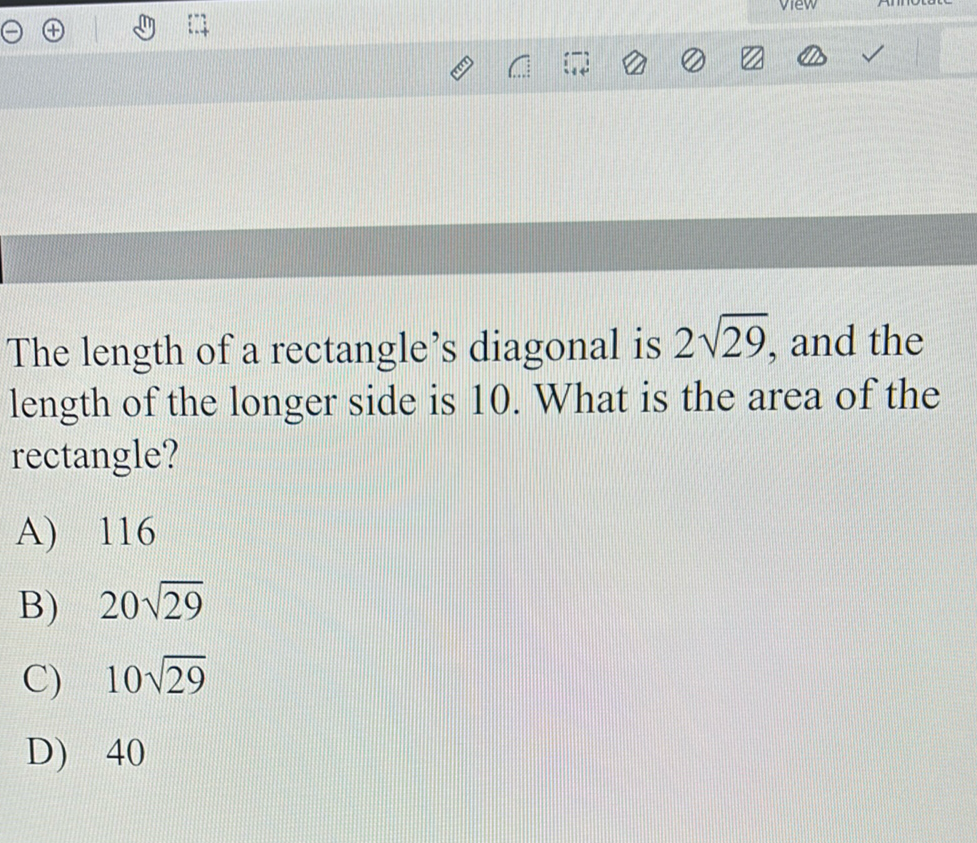Full solution
Q. The length of a rectangle's diagonal is , and the length of the longer side is . What is the area of the rectangle?A) B) C) D)
- Identify Rectangle Dimensions: To find the area of the rectangle, we need to know both the length and the width. We already know the length is . We can use the Pythagorean theorem to find the width, since the diagonal (), length (), and width () of a rectangle form a right triangle: .
- Calculate Diagonal Squared: We are given that the diagonal is . Let's square this to find : .
- Calculate Length Squared: We know the length is , so let's square this to find : .
- Substitute into Pythagorean Theorem: Now we can substitute and into the Pythagorean theorem to find : .
- Solve for Width: Subtract from both sides to solve for : , so .
- Find Width: Take the square root of both sides to find : , so .
- Calculate Area: Now that we have both the length () and the width (), we can find the area of the rectangle by multiplying the length by the width: .
- Final Area Calculation: Calculate the area: .
More problems from Transformations of functions
QuestionGet tutor help
QuestionGet tutor help
QuestionGet tutor help
QuestionGet tutor help
QuestionGet tutor help

